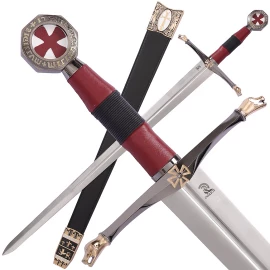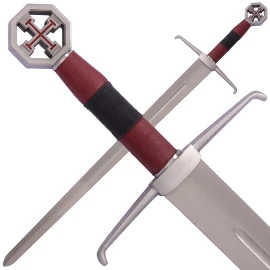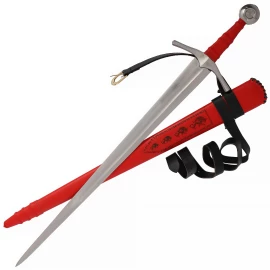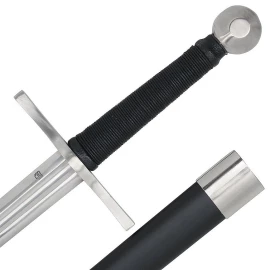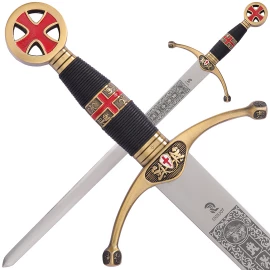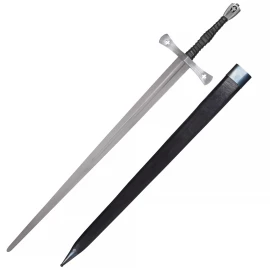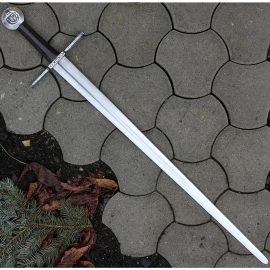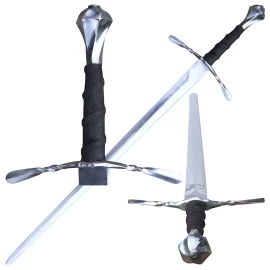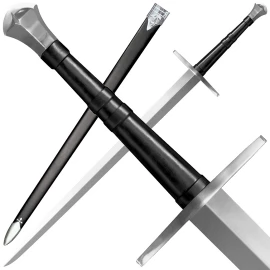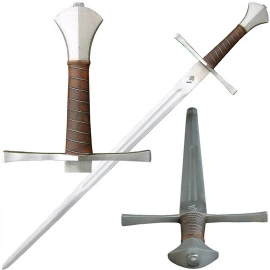Medieval swords
In the Middle Ages, the sword was often used as a symbol of the word of God. The names given to many swords in mythology, literature, and history reflected the high prestige of the weapon and the wealth of the owner. The knightly sword develops in the 11th century from the Viking Age sword. The most evident morphological development is the appearance of the crossguard. The transitional swords of the 11th century are also known as Norman swords. Already in the 10th century, some of the "finest and most elegant" of the Ulfberht type of "Viking" (actually Carolingian/Frankish) swords began to exhibit a more slender blade geometry, moving the center of mass closer to the hilt to improve wieldability.
Narrow your Results
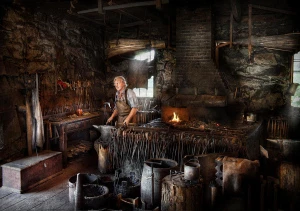
Medieval swords
During the Middle Ages sword technology improved, and the sword became a very advanced weapon. It was frequently used by men in battle, particularly during an attack. The spatha type remained popular throughout the Migration period and well into the Middle Ages. The Viking Age saw again a more standardized production, but the basic design remained indebted to the spatha.
Around the 10th century, the use of properly quenched hardened and tempered steel started to become much more common than in previous periods. The Frankish 'Ulfberht' blades were of particularly consistent high quality. The use of Damascus steel in swords became extremely popular in the 16th and 17th centuries.
It was only from the 11th century that Norman swords began to develop the crossguard (quillons). During the Crusades of the 12th to 13th century, this cruciform type of arming sword remained essentially stable, with variations mainly concerning the shape of the pommel. These swords were designed as cutting weapons, although effective points were becoming common to counter improvements in armour, especially the 14th-century change from mail to plate armour.
It was during the 14th century, with the growing use of more advanced armour, that the hand and a half sword, also known as a "bastard sword", came into being. It had an extended grip that meant it could be used with either one or two hands. Though these swords did not provide a full two-hand grip they allowed their wielders to hold a shield or parrying dagger in their off hand, or to use it as a two-handed sword for a more powerful blow.
The one-handed sword of the high medieval period was typically used with a shield or buckler. In the late medieval period, when the longsword came to predominate, the single-handed sword was retained as a common sidearm, especially of the estoc type, and came to be referred to as an "arming sword", later evolving into the cut and thrust swords of the Renaissance.

